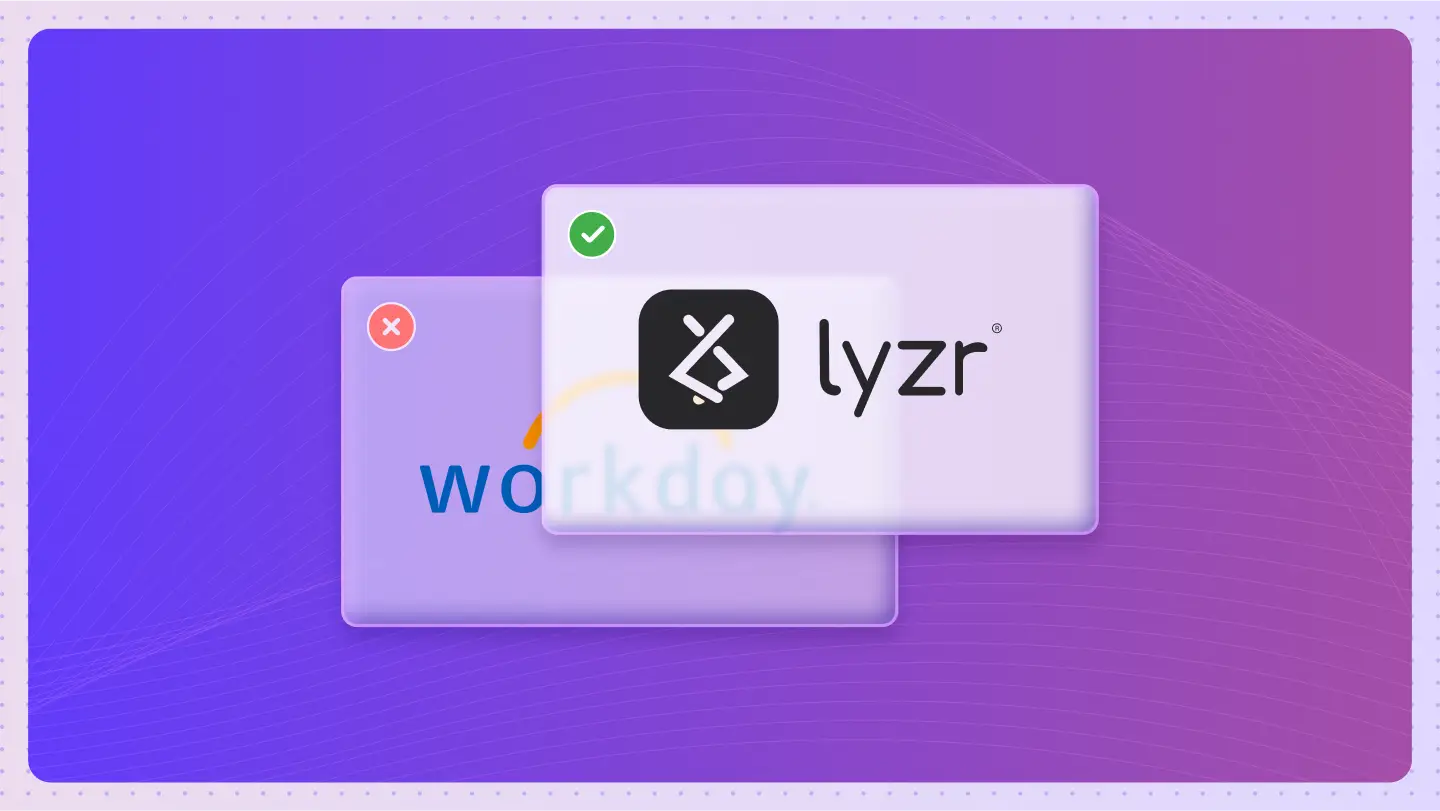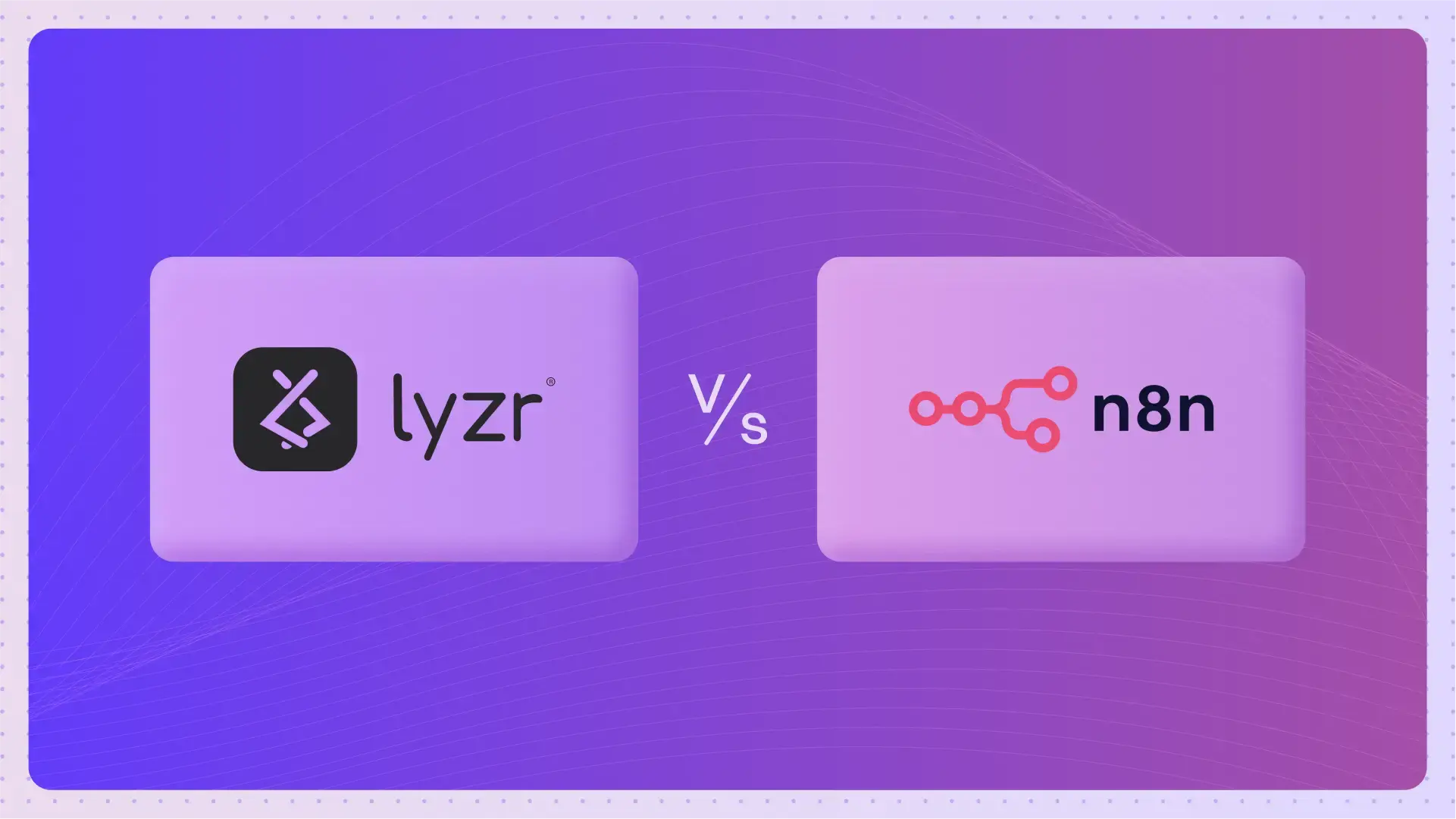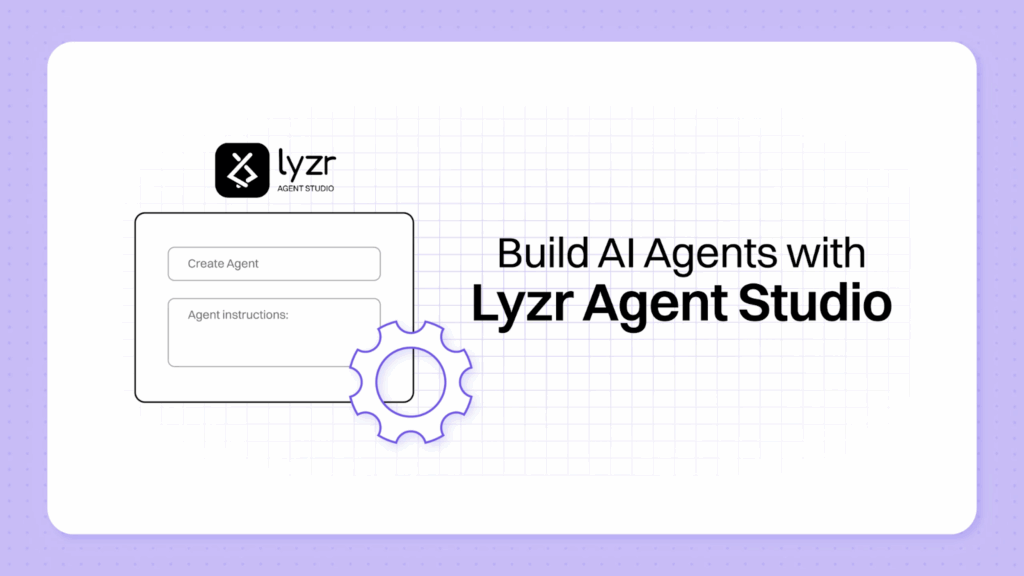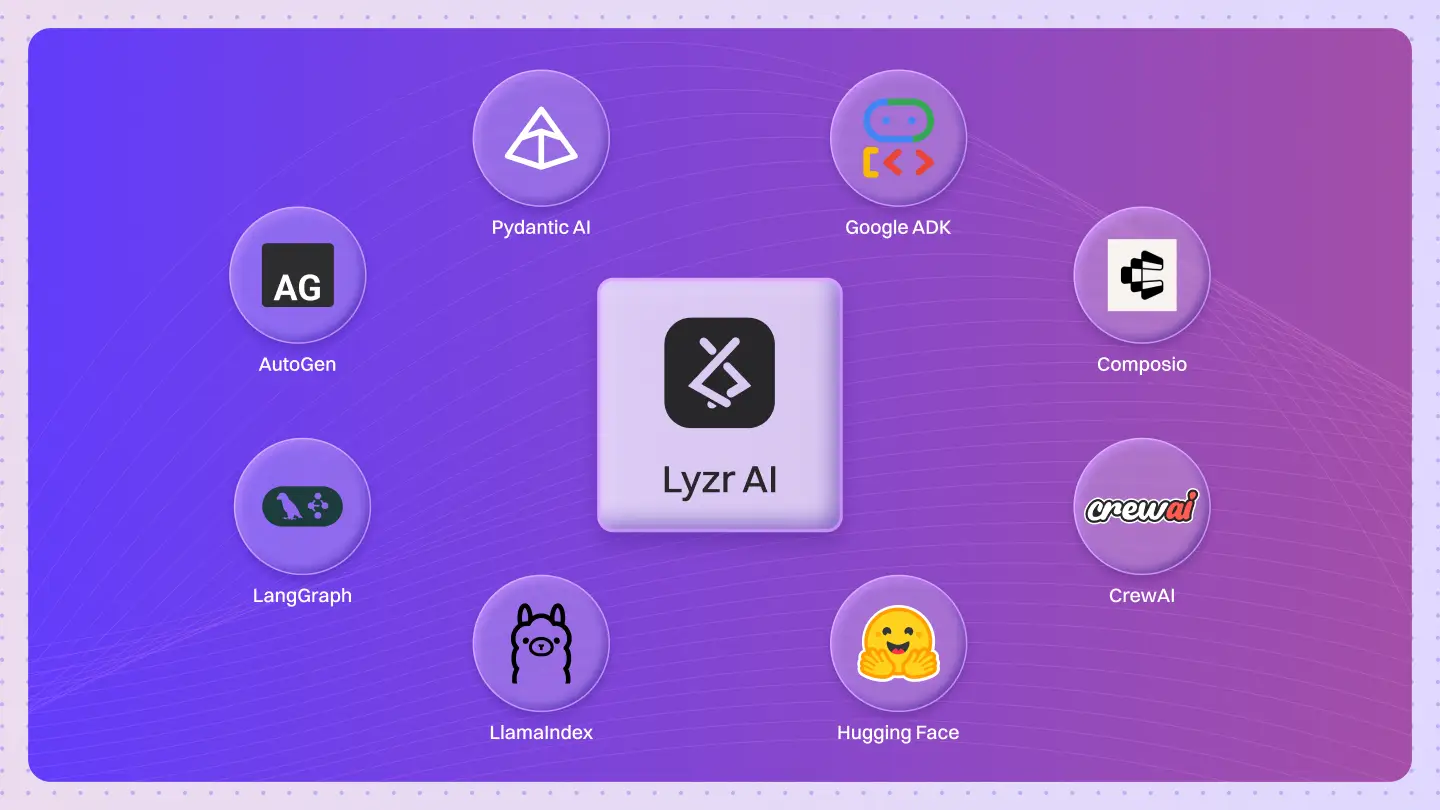Table of Contents
ToggleIf you’re exploring the world of workflow automation, you’ve likely come across n8n. It’s a popular open-source tool for connecting apps and automating tasks. But as your automation needs grow and you begin to explore the power of AI, you might find yourself looking for an n8n alternative.
You’re not alone. Many businesses start with n8n but eventually seek a more scalable, intelligent, and enterprise-ready solution. In this article, we’ll explore the pros and cons of n8n and introduce you to a powerful n8n alternative.
What is n8n?
n8n is an open-source workflow automation platform that lets users connect and automate tasks across hundreds of apps and services.
Its visual editor makes it easy to create workflows with a drag and drop interface, while still offering the flexibility to add custom code when needed. As a no code automation platform, it empowers users without programming knowledge to automate workflows seamlessly.
With 400+ pre-built integrations and the option to self-host, n8n is ideal for teams seeking a secure, scalable, and highly customizable automation solution.
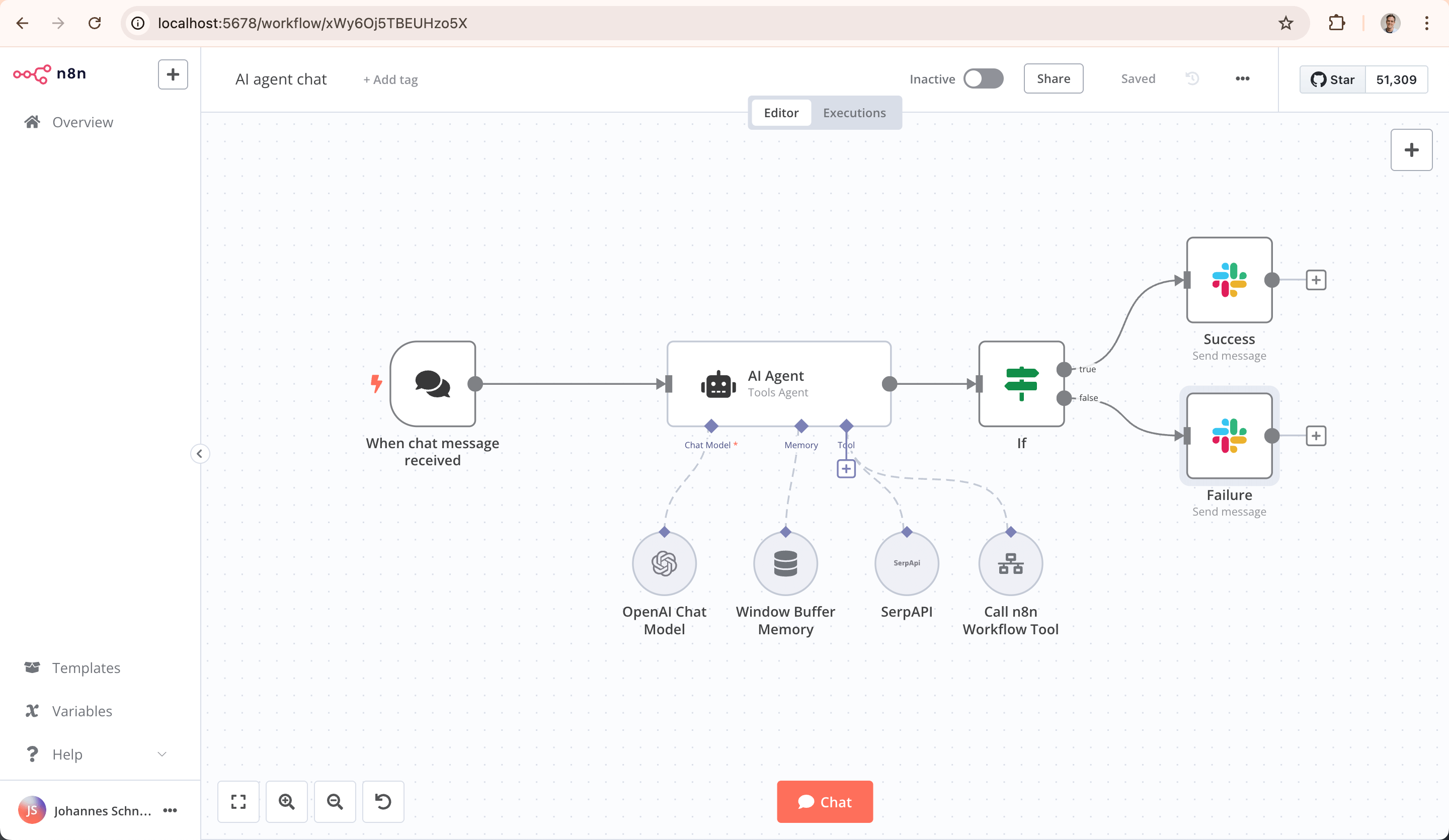
Why is n8n so Popular?
Here are three key reasons why n8n has gained popularity:
- Open-source and self-hostable: Organizations value the control and transparency that come with open-source software. With n8n, teams can self-host, ensuring data privacy and meeting internal security requirements.
- Flexible for all skill levels: The visual workflow builder is accessible to non-developers, while developers can extend functionality with custom code, making it versatile for both technical and non-technical users. Additionally, the platform supports conditional logic, allowing users to create dynamic workflows that respond to specific triggers or criteria.
- Extensive app integrations: With over 400 built-in integrations and support for custom APIs, n8n connects easily with popular tools, making it easy to automate end-to-end workflows across teams. Its vast library of nodes and the ability to create unlimited workflows without extra costs further enhance its appeal, especially for engineering teams managing intricate processes.
But Why Look for n8n Alternatives and Competitors?
n8n checks a lot of boxes, but here’s when it might fall short, and why you should consider an n8n alternative.
1. Setup and Maintenance Can Get Complicated: While n8n appears user-friendly on the surface, setting up and maintaining complex workflows often requires technical expertise and can involve complex setups. Additionally, the platform may have a steeper learning curve for users who are not familiar with advanced workflow automation tools.
Issues like memory errors, unresponsive workflows, and infrastructure tuning can slow teams down. Major upgrades may also break existing workflows, forcing users to manually fix deprecated nodes. Self-hosting n8n can also be resource-intensive in terms of management and infrastructure.
2. Limited Support for Enterprise Needs: n8n isn’t built with enterprise-grade support in mind. Organizations that require guaranteed uptime, compliance-ready automation, and dedicated customer assistance may find its support infrastructure lacking for mission-critical operations. This is a primary driver for seeking an enterprise-grade n8n alternative.
3. Scalability Issues with High-Volume Workflows
n8n can struggle with high-volume workflows. As the number of parallel workflows increases, performance can degrade, leading to delays in automation. This performance bottleneck is a common reason why users begin to evaluate an n8n alternative.
| Challenge | What Happens in n8n | Impact |
| Large or parallel workflow execution | Response times slow down | Delays in automation, reduced efficiency |
| Memory-heavy tasks with many nodes | System becomes unstable or unresponsive | Workflow crashes or failed runs |
| Scaling beyond certain thresholds | Performance degrades instead of improving | Limits ability to handle enterprise volume |
4. Gaps in Advanced AI Automation: n8n supports basic AI use cases like summarization or chatbot integration, but it falls short on advanced AI-driven automation. Platforms offering features like process intelligence, real-time decisioning, or predictive analytics outpace n8n in this area.
So, what’s the solution?
If n8n feels limiting as your automation needs grow, here’s what to look for next as n8n alternative:
1. Choose a platform built to scale from day one: Look for automation platforms that don’t slow down under pressure.
Whether it’s handling hundreds of parallel workflows or memory-heavy tasks, the right n8n alternative should offer stable performance, even at scale.
Additionally, ensure the platform provides seamless integration with third-party applications and offers scalable solutions to optimize processes and enhance efficiency. This will lead to improved productivity and significant cost savings over time. Opt for cost-effective options that provide value without the financial burden associated with task-based pricing.
2. Go beyond basic automation, bring in real intelligence: If AI is part of your roadmap, you need more than just chatbots and summaries. Opt for platforms that support intelligent decision-making, process optimization, and predictive analytics out of the box.
3. Don’t settle for DIY support: When automation is critical to operations, enterprise-grade support isn’t optional. Choose a solution that offers dedicated assistance, SLAs, and compliance readiness, so you’re not stuck troubleshooting when it matters most.
Lyzr: The Premier n8n AI Alternative
While n8n is a powerful tool for basic workflow automation, Lyzr is built from the ground up to handle complex, AI-driven tasks with built-in safety and reliability. But don’t just take our word for it, see for yourself what makes Lyzr different and the best n8n alternative.
1. Agentic automation to automate tasks that scales without the sprawl

In n8n, building a moderately complex workflow can easily stretch into 50+ nodes, each handling basic conditionals, retries, or API calls. In Lyzr, a single agent encapsulates all of that. Agents come with:
- Built-in memory to carry context across steps
- Automatic retries and error handling
- Dynamic task execution, including reasoning over unstructured data
- Schema-aware operations for structured inputs and outputs
Lyzr excels in managing sophisticated workflows and complex data pipelines, making it an ideal choice for advanced orchestration platforms designed to streamline data workflows. You write the high-level logic, and Lyzr handles the execution complexity under the hood. Workflows don’t grow in node count as they grow in complexity.
2. AI-native by design, not as an afterthought
Unlike n8n, where AI integration is limited to basic wrappers around OpenAI or LangChain nodes, Lyzr is built to run AI agents natively.
Every automation step can include reasoning, context retrieval, and structured output without chaining dozens of steps.
Additionally, Lyzr supports event-driven workflows and complex data transformations, enabling advanced data processing and seamless integration across different platforms and applications.

Key built-in capabilities include:
- RAG (Retrieval-Augmented Generation) from organizational knowledge bases
- Function calling support for dynamic execution with structured outputs
- Voice interface integration (via ElevenLabs) for speaking agents
- Live web and file search, including structured summarization
- Redaction, toxicity filtering, and organizational schema enforcement
Safety, governance, and AI utility are all handled internally, out of the box.
3. Enterprise controls already in place
Lyzr is built for teams that care about control, security, and traceability, providing full control over data management and workflows, something n8n lacks in its current form.
Additionally, Lyzr alleviates the complexities of managing infrastructure, allowing users to focus more on their core tasks.

Out-of-the-box enterprise-grade features:
- Agent-level permissions to control data access
- Auto-generated audit trails with versioning and logs
- Policy-based governance to define what agents can access and how they behave
- No-code deployment via API, Slack, voice, or widgets
- Pre-deployment review and post-deployment analytics
These features make Lyzr suitable for large teams, regulated environments, and high-volume operations without needing to bolt on external governance tools.
At a glance: Platform Comparison
| Feature Area | n8n | Lyzr |
|---|---|---|
| Workflow Size | 50+ nodes common | 60–80% fewer nodes with agent abstraction |
| Data Handling | Manual between steps | Agents share memory automatically |
| Scalability | Performance drops with scale | Built-in Organizational Graph Intelligence |
| AI & Automation | 10–12 nodes for basic AI tasks | 1 agent + 3 micro-tools, LLM-native |
| UI & Voice Support | Requires external setup | Native dynamic UI and voice agents |
| Governance & Security | Manual setup for redaction, audit, access | Agent-level controls, redaction, audit built-in |
| Best For | Quick API-to-API automations | Multi-team AI agent ops with built-in safety |
| Internal Processes & Data Flow | Manual setup for internal processes and data flow | Automated internal processes and optimized data flow with built-in tools |
| Internal Tools | Custom internal tools require manual integration | Seamless integration of custom internal tools with existing systems |
1. Workflow Complexity with a visual workflow builder
Lyzr’s agent-based approach reduces workflow complexity by handling logic, retries, and data internally, cutting down on the sprawling nodes typical of n8n. To see how this works in practice, here’s a look at how you can build powerful, multi-step workflows in Lyzr with just a few components.
| Feature | n8n | Lyzr |
| Workflow Structure | Complex workflows can sprawl into 50+ nodes. | Uses agent abstraction, reducing node count by 60-80%. |
| Data & Memory | Requires manual data passing between each step. | Agents automatically retain and share memory across steps. |
| Logic & Maintenance | Each condition or retry logic adds more nodes, increasing maintenance overhead. | Handles logic, retries, and branching internally, simplifying the workflow. |
| Ease of Use | Suitable for intricate, manually-built workflows. | Supports complex, multi-step automations without coding. |
2. Scalability & Organizational Knowledge

As an automation platform’s responsibilities grow, its ability to scale and leverage an organization’s internal knowledge becomes paramount. Simply connecting applications is no longer enough; true value comes from intelligently interacting with internal documents, databases, and user interfaces. Here’s how n8n and Lyzr differ in their approach to scalability and integrating organizational knowledge.
| Capability | n8n | Lyzr |
| Organizational Knowledge | Lacks built-in support; requires custom setup or third-party tools. | Features built-in OGI (Organizational General Intelligence) to ground agents in internal data. |
| Advanced Interfaces (UI/Voice) | Voice and dynamic UI integrations require external workarounds. | Supports native UI widgets and voice agents, ready to deploy without extra layers. |
| Scalable Data Workflows | Scaling is dependent on custom-built knowledge integrations. | Natively manages complex data workflows for enhanced efficiency and cost savings. |
3. Intelligence & Safety
In today’s data-sensitive environment, the intelligence and safety of an automation platform are just as important as its connectivity. A truly advanced system must not only execute tasks but also handle them securely and efficiently. The way a platform integrates AI and safety features, either as a core part of its design or as a bolted-on afterthought, drastically affects its power and reliability. Here’s a look at how n8n and Lyzr approach intelligence and safety.
| Aspect | n8n | Lyzr |
| AI Workflow Complexity | Requires 10-12 manual nodes for a typical AI task (API auth, parsing, error handling, etc.). | Achieves the same result with a single AI agent and 3 auto-generated micro-tools. |
| Native AI Capabilities | Relies on external API calls and lacks built-in intelligent features like schema alignment. | Features LLM-powered schema alignment and autonomous retry logic for greater efficiency. |
| Built-in Safety Features | Lacks native features for content filtering, toxicity checks, or data redaction. | Redaction, toxicity filtering, and structured outputs are built-in for secure, reliable automation. |
4. Security & Governance
For enterprise-grade automation, robust security and governance aren’t just features, they’re fundamental requirements. The ability to control who can access what, audit every action, and enforce data policies across an organization is critical for compliance and risk management. How a platform handles these responsibilities natively can be a major deciding factor. Here’s how n8n and Lyzr compare on security and governance.
| Feature | n8n | Lyzr |
| Access Control | No granular, agent-level access control. | Built-in, agent-level permissions with a modular architecture. |
| Auditing & Policies | Audit trails and entitlement policies require manual setup or third-party plugins. | Automatically generates audit logs and has built-in data-sharing controls. |
| Data Boundaries | It is difficult to enforce org-wide data boundaries in collaborative setups. | Governance-ready with built-in redaction and entitlement policies for regulated industries. |
Now you should have a clear idea of where n8n falls short and why you should consider n8n alternatives. While there are many options, you should now understand why lyzr stands out.
Choosing Your n8n Alternative: Which Platform Fits Your Needs?
Choosing the right platform depends on your needs. If you just want to automate simple tasks, like passing data or triggering workflows, n8n is a solid choice for developers who prefer manual control. For more advanced use cases, however, a dedicated n8n alternative is often required.
But if you want to build AI agents that think, remember, and adapt, or need enterprise-grade workflows with built-in safety and memory, Lyzr is the better option.
Lyzr goes beyond simple automation.
It’s designed for AI-powered workflows with smart agents, making it the ideal choice for teams looking to scale quickly and safely.
Additionally, Lyzr offers extensive integration capabilities, allowing you to connect and interact seamlessly with popular services. This makes it easier to automate repetitive tasks and tailor workflows to specific needs.
FAQ
What is the main difference between n8n and Lyzr?
n8n is an open-source platform focused on workflow automation, suitable for developers who want to connect APIs and automate tasks. It’s flexible and customizable, but can struggle with scalability and advanced AI use cases.
Lyzr, on the other hand, is an n8n alternative built specifically for AI-powered automation with advanced features like agent-level memory, safety, and governance, making it a better fit for teams managing complex, enterprise-grade workflows.
Additionally, Lyzr is a low code platform, which means it does not require extensive technical knowledge to create and manage workflows.
Is n8n suitable for enterprise use?
While n8n offers flexibility and a visual interface for building workflows, it lacks the enterprise-grade support and governance features required by large organizations.
Scaling n8n for high-volume workflows or ensuring compliance often requires external tools or custom configurations.
For enterprise-level needs, Lyzr offers built-in controls like agent-level permissions, audit trails, and policy-based governance. Moreover, Lyzr’s features enable users to automate intricate workflows efficiently.
How does Lyzr handle AI automation compared to n8n?
n8n offers basic AI integration, but it requires multiple nodes and custom setup for each AI task. Lyzr is natively built to handle AI automation with minimal configuration.
Lyzr uses AI agents that can reason, remember, and execute tasks with integrated memory and context, making it far more efficient and intelligent for complex automation.
Can Lyzr handle large workflows without performance issues?
Yes, Lyzr is designed to scale efficiently. It uses agent abstraction, reducing the number of nodes required in workflows by 60–80%.
This ensures smoother performance, even with complex or high-volume workflows, unlike n8n, which can struggle with performance degradation as workflows grow in size.
Does Lyzr offer built-in security and governance features?
Yes, Lyzr comes with enterprise-grade security and governance features out of the box, including agent-level access controls, audit trails, data redaction, and policy-based governance. n8n, by contrast, requires manual setup and third-party tools to implement these features.
Book A Demo: Click Here
Join our Slack: Click Here
Link to our GitHub: Click Here





